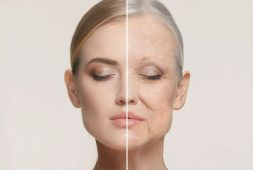
Health experts have always preached about exercise, especially in old age. However, is the belief that metabolism slows down as we got older true? While we have been conditioned to believe that this has always been the case, some say that this may not be what’s happening.
Every single day, scientists discover more and more about the human body. They’re constantly proving and debunking some common beliefs. Right now, they’re looking into metabolism. Does it really slow down as we age? Is it why it’s harder to lose weight as we get older?
What We’ve Always Known
When we look back on our childhood, we remember a time when we could eat anything our heart desired. Nothing would happen. In fact, we wouldn’t see the scales tip at all. Our parents would tell us that the reason for this was that we had amazing metabolism. However, a new study suggests our metabolism, in other words, the rate at which we burn calories, actually begins its certain decline at a much later age. We all assumed that it would be during mid-life, which could actually be untrue.
Moreover, we’ve been conditioned to assume that our teens and 20s as the age when our calorie-burning potential is at its finest. However, the researchers found something contrary to this belief. In terms of pound for pound, infants had the relatively highest metabolic rates when compared to other age brackets.
Professor Herman Pontzer, a Duke University associate, joined an international team of scientists to study and analyze the average calories burned by more than 6,600 people. These participants came from a wide variety of age range. They chose people from one week old to 95 years of age. They studied them as they went about their daily lives. This happened in 29 countries all over the world. However, they also focused on puberty, menopause, and other phases of life. Pontzer was actually the study’s co-author and he was surprised at the findings. He said, “What’s weird is that the timing of our ‘metabolic life stages’ doesn’t seem to match those typical milestones.”
The previous large-scale studies mostly measured how much energy the body made use of to perform basic vital functions. These included breathing, digesting, pumping blood. Essentially, these were the calories we needed just to keep ourselves alive. In reality, this part of the body’s metabolism only accounted for 50 percent to 70 of the calories we burn every single day. This doesn’t even consider or count the energy we spend doing other activities such as washing the dishes, walking the pets, exercising in the gym, breaking a sweat do something strenuous, and even just thinking or fidgeting.
To come up with the exact figures for the body’s total daily energy expenditure, the researchers involved relied on the “doubly labeled water” method. What this is, is a urine test that requires the person to drink water in which the hydrogen and oxygen in the liquid’s molecules have been replaced with naturally occurring “heavy” forms. Then, they measuring how quickly they’re flushed out from the body. In reality, many scientists have used this technique because many consider it to be the gold standard for measuring daily energy expenditure in terms of living the normal daily life which happens outside of the lab. They have employed it to measure energy expenditure in people since the 1980s. Unfortunately, studies of this nature have been limited in size and scope because it has proven to be quite costly. In order to cut down on costs and make the study doable, multiple labs decided to come together and share their data. They collated all their measurements in a single database. This would then allow them to see if they could get the truths out that weren’t previously revealed or were only hinted during the past experiments and studies.
Gathering Data
Pooling and analyzing the expenditures that ran across a person’s entire lifespan revealed some new and surprising details. Among which would be the data that showed how babies actually have the highest metabolic rates when compared to the rest. In the first 12 months of a baby’s life, their body’s energy needs shoot upward. In fact, during a child’s first birthday, he or she burns calories 50 percent faster for their body size than that of a grownup.
This phenomenon goes further than the fact that during a person’s first year, infants are busy tripling their birth weight. Pontzer, author of a book on the science of metabolism, Burn: How We Really Burn Calories, Lose Weight, and Stay Healthy, shared, “Of course they’re growing, but even once you control for that, their energy expenditures are rocketing up higher than you’d expect for their body size and composition.”
A baby’s metabolism is at a gas-guzzling pace and is impressively quick. This could partly explain why children who don’t get enough to eat during this time in the developmental window are less likely to survive and grow up to be a healthy individual. Pontzer said, “Something is happening inside a baby’s cells to make them more active, and we don’t know what those processes are yet.”
After this initial surge during the first years in life, the data then shows how the body’s metabolism slows by about 3 percent each year until we reach our 20s. This is when it levels off into a new normal, as what they call it. While the teen years is a time of growth spurts, the researchers didn’t observe any uptick or increase in daily calorie needs in adolescence when they took body size into consideration. “We really thought puberty would be different and it’s not,” explained Pontzer.
The 30s, 40s, and 50s Age
The midlife age came as another surprise as well. We’ve been told, time and again, that it’s all downhill once we reach our 30s, especially when it comes to our weight. In reality, there are several factors that need to be considered as these could explain the thickening waistlines that often become apparent during our prime working years. The findings that they had collated show that a changing metabolism isn’t the culprit here.
In reality, there was more to it than just mere metabolism. The researchers discovered that energy expenditures during these middle decades, which is the 20s, 30s, 40s and 50s, were actually the most stable. Even for a pregnant woman, her calorie needs were no more or less than expected the added weight that she carries because of the fetus that’s growing insider of her.
The data the researchers gathered suggest that our metabolisms don’t really start to go down or decline until we reach 60 years of age. The slowdown is gradual though, as it is only 0.7 percent per year. Someone in their 90s, on the other hand, needs 26 percent fewer calories on a daily basis than someone in their 50s. Lost muscle mass as we get older could also be the other culprit. The researchers say that since muscle burns more calories than fat, it’s a likely possibility. But that’s not the entirety of the fact. “We controlled for muscle mass,” Pontzer explained. Then, he further said, “It’s because their cells are slowing down.”
The patterns held even when the activity levels were different were also taken into account. According to the research, which was published August 12 in the journal Science and funded by the National Science Foundation and IAEA, there was more to metabolism than meets the eye.
For a long time, what drives shifts in energy expenditure has been difficult to analyze and dissect because aging goes hand in hand with so many the other changes that come with life, according to Pontzer. But the recent research made does support to the idea that it’s more than age-related changes in lifestyle and/or body composition.
Pontzer stated, “All of this points to the conclusion that tissue metabolism, the work that the cells are doing, is changing over the course of the lifespan in ways we haven’t fully appreciated before.” Then, he further said, “You really need a big data set like this to get at those questions.”



